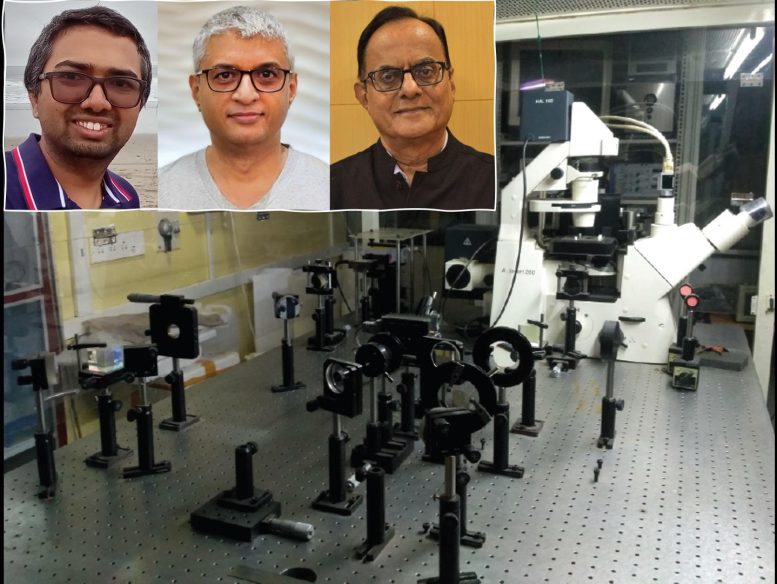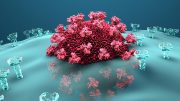
Researchers have developed a “micro heat engine” that challenges the Carnot limit by achieving high efficiency and power at the microscopic level. This engine, which operates on a single colloidal particle directed by a laser beam and manipulated by an electric field, exhibits efficiency near 95% of the Carnot limit. This advance overturns long-held beliefs that high power and high efficiency are mutually exclusive due to the power-efficiency tradeoff, and it could lead to the development of more energy-efficient devices in the future.
Designing a heat engine capable of producing maximum power while maintaining maximum efficiency has long been a significant challenge in physics and engineering. Practical heat engines are constrained by a theoretical limit to their efficiency, known as the Carnot limit, which sets a cap on how much heat can be converted to useful work.
In a breakthrough, researchers at the Indian Institute of Science (IISc) and Jawaharlal Nehru Centre for Advanced Scientific Research (JNCASR) have devised a novel “micro heat engine” that has overcome this limitation at the lab scale. The study was recently published in the journal Nature Communications.
“What was considered impossible until today, we have demonstrated that it is possible: achieving both high efficiency and high power simultaneously,” says corresponding author Ajay K Sood, National Science Chair Professor at the Department of Physics, IISc, and Principal Scientific Adviser to the Government of India.
Understanding the Power-Efficiency Tradeoff
Heat engines convert heat into work – for example, moving a piston in a certain direction. For an engine to be 100% efficient, when the process is reversed – the piston returns to its original state – there should be no heat wasted, which is what was proposed by French physicist Sadi Carnot in 1824.

Optical tweezer apparatus in Ajay Sood’s lab at IISc. Inset (L-R): Sudeesh Krishnamurthy, Rajesh Ganapathy, and Ajay Sood. Credit: Sudeesh Krishnamurthy
This is only theoretically possible if the process happens extremely slowly, but that also means that the power output will be zero, making the engine practically useless. This is known as the power-efficiency tradeoff.
Advances in Micro Heat Engines
“Since the 1970s, people have been attempting to address the power-efficiency trade-off. In the early 2000s, researchers explored microscopic systems to overcome this challenge. Interestingly, in 2017, a paper claimed that it was impossible to solve this thermodynamic puzzle,” says Sudeesh Krishnamurthy, former PhD student at the Department of Physics, IISc, and first author of the study.
In the current study, the team mimicked the functioning of a conventional heat engine at the micron scale. Instead of using a mix of gas and fuel, they took a tiny gel-like colloidal bead and used a laser beam to direct its motion, similar to how the piston works in a macroscopic engine.
“Our unique micro-scale engine operates with just one particle,” says Rajesh Ganapathy, Professor at JNCASR and another author. The size of the engine is very small, about 1/100th the width of a single human hair, he adds.
Strides Toward High Efficiency and Power
The team also used a rapidly changing electric field to cycle the engine between two states. Under these conditions, they found that the waste heat dissipated drastically reduced, bringing the efficiency close to 95% of the limit specified by Carnot.
“What we have achieved is a reduction in heat distribution time through the introduction of the electric field. This reduction in heat distribution time allows the engine to operate at high efficiency and simultaneously yield a large power output even while operating at high speeds,” says Krishnamurthy.
Future Implications
Previously, the team designed a high-power engine that used a live bacterium to push the particle and power the system. This time, the researchers replaced the bacterium with an electric field to move the particle more efficiently in the colloidal medium and to increase the system’s durability.
The results from the experiments show that, under certain conditions, high power can be achieved with high efficiency. Such an advancement could pave the way for more energy-efficient devices in the future.
“If one can draw a message from here and try to see how to make a practical interpretation of this micro engine, that is the next part of the story,” emphasizes Sood. “We have opened doors that scientists almost gave up opening due to the thermodynamic constraints set by Carnot in previous studies.”
Reference: “Overcoming power-efficiency tradeoff in a micro heat engine by engineered system-bath interactions” by Sudeesh Krishnamurthy, Rajesh Ganapathy and A. K. Sood, 27 October 2023, Nature Communications.
DOI: 10.1038/s41467-023-42350-y









Is the energy consumed by the electric field taken into account?
I would like an answer to Clyde’s question
News articles like this tend to be a summary of the abstract and not a deep dive into the actual paper. We know the answer to Clyde’s question. Of course not. These types of experiments help physicists to gain the experience conducting research and develop novel ways of making measurements My favorite bumper sticker…Honk if you pasted P-Chem…. Thermodynamics rules the physical world
I would like to remind that the violation of the Carnot thereom has a much deeper meaning than the perspective to have more efficienct engines. As well known, this violation would mean the violation of the second law of thermodynamics, and this second violation (suggested by many since the discovery of the second law) would lead to the violation of another inviolable fundamental law of physics. A recent paper by Miss Qiong YE and coauthors discussed this point with mathematical proof (link here)
https://www.researchgate.net/publication/364930174_You_certainly_know_the_second_law_of_thermodynamics_Do_you_know_its_connection_to_other_laws_of_physics_and_chemistry
So the Carnot limit hasn’t actually been challenged, it’s been approached. Which doesn’t alter the notion that it is still a limit.
To put it in more easier ways they’re using energy a.k.a electricity to slow down the spread of the heat that in turn means that if in a large environment rich in energy the efficiency of energy production will increase but it in reality it’s the effect of the environment energy being harvested and its affect on heat spread example would be a volcano or a stormy place even deep in the ocean.